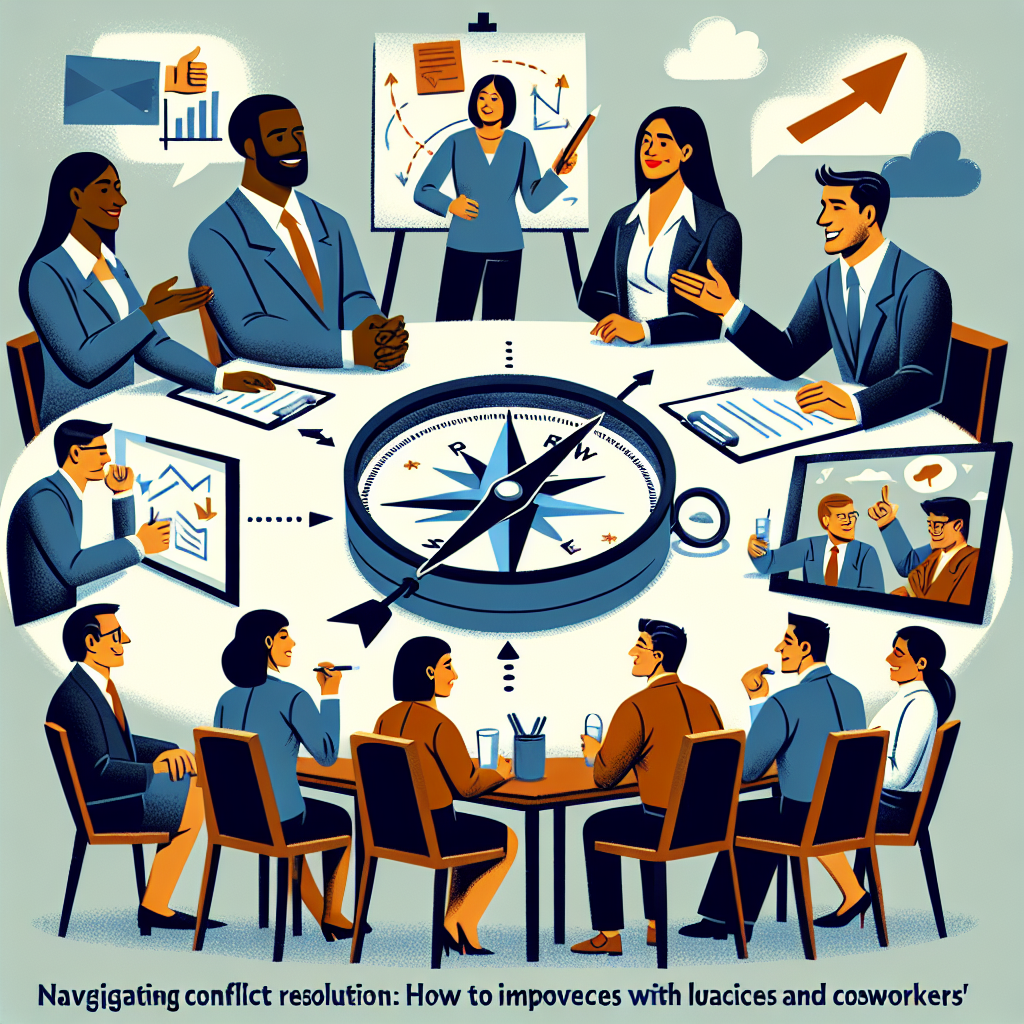Conflict is an inevitable part of professional life. Whether it is a disagreement over a project timeline, a difference in opinion on a new strategy, or a clash of personalities, conflicts can arise in any workplace. However, how these conflicts are navigated and resolved can have a significant impact on the relationships with colleagues and coworkers. It is essential to have effective conflict resolution strategies in place to ensure a positive work environment and maintain healthy relationships with those we work with.
Navigating conflict resolution is a skill that can be learned and developed. By understanding the root causes of conflict, implementing effective communication strategies, and utilizing conflict resolution techniques, individuals can improve their relationships with colleagues and coworkers. In this article, we will explore how to navigate conflict resolution in the workplace and provide practical tips on how to improve relationships with those we work with.
Understanding the Root Causes of Conflict
Conflict in the workplace can arise from a variety of sources. Differences in values, communication styles, work habits, and personalities can all contribute to conflicts between colleagues. It is important to understand the root causes of conflict in order to address them effectively.
One common cause of conflict in the workplace is poor communication. Misunderstandings, lack of clarity, and misinterpretations can all lead to conflicts between colleagues. By improving communication skills and being more open and transparent in our interactions with others, we can reduce the likelihood of conflicts arising.
Another common cause of conflict is differing expectations. When colleagues have different expectations about a project, goal, or task, it can lead to misunderstandings and disagreements. It is important to clarify expectations and establish clear goals and objectives to prevent conflicts from arising.
Personality clashes can also be a source of conflict in the workplace. Differences in personalities, work styles, and approaches to tasks can lead to friction between colleagues. By recognizing and respecting the unique strengths and perspectives of our colleagues, we can minimize conflicts and build stronger relationships.
Implementing Effective Communication Strategies
Effective communication is key to navigating conflict resolution in the workplace. By improving our communication skills and being more proactive in our interactions with colleagues, we can prevent conflicts from escalating and create a more harmonious work environment.
One essential communication strategy for resolving conflicts is active listening. By listening attentively to our colleagues’ perspectives, feelings, and concerns, we can gain a better understanding of their point of view and work towards finding common ground. Active listening involves being empathetic, asking clarifying questions, and demonstrating respect for others’ opinions.
Another important communication strategy is assertiveness. Being assertive means expressing our thoughts, feelings, and needs in a clear and direct manner while respecting the rights and opinions of others. By being assertive in our communication, we can assert our boundaries, express our concerns, and address conflicts in a constructive way.
Additionally, it is important to practice effective nonverbal communication in conflict resolution. Nonverbal cues such as facial expressions, body language, and tone of voice can convey important messages and emotions during conflicts. By being aware of our nonverbal communication and using it to support our verbal communication, we can enhance our ability to resolve conflicts effectively.
Utilizing Conflict Resolution Techniques
In addition to effective communication strategies, there are various conflict resolution techniques that can be used to navigate conflicts in the workplace. These techniques can help individuals address conflicts in a productive and constructive manner, leading to better relationships with colleagues and coworkers.
One common conflict resolution technique is the Win-Win approach. This approach focuses on finding mutually beneficial solutions to conflicts by identifying common goals and interests. By collaborating with colleagues to brainstorm creative solutions and compromise on divergent interests, individuals can reach agreements that satisfy both parties and strengthen their relationships.
Another conflict resolution technique is the Mediation approach. Mediation involves a neutral third party facilitating discussions between conflicting parties to help them identify and address their underlying issues. By participating in mediation sessions, individuals can gain a fresh perspective on the conflict, explore different solutions, and work towards a resolution with the support of a mediator.
FAQs
Q: How can I approach a colleague with whom I am in conflict?
A: Approach the colleague in a calm and respectful manner. Express your concerns and listen to their perspective. Try to find common ground and work towards a resolution together.
Q: What should I do if a conflict escalates and becomes unmanageable?
A: Seek support from a manager, HR representative, or a neutral third party such as a mediator. It is important to address conflicts promptly and proactively to prevent them from escalating further.
Q: How can I prevent conflicts from arising in the workplace?
A: Communicate effectively, set clear expectations, respect others’ perspectives, and be open to feedback. By fostering a positive and inclusive work environment, you can prevent conflicts from arising and build stronger relationships with colleagues.
In conclusion, navigating conflict resolution in the workplace is essential for improving relationships with colleagues and coworkers. By understanding the root causes of conflict, implementing effective communication strategies, and utilizing conflict resolution techniques, individuals can resolve conflicts in a constructive and proactive manner. By fostering open communication, mutual respect, and collaboration, individuals can create a positive work environment and build stronger relationships with those they work with.




Leave A Comment